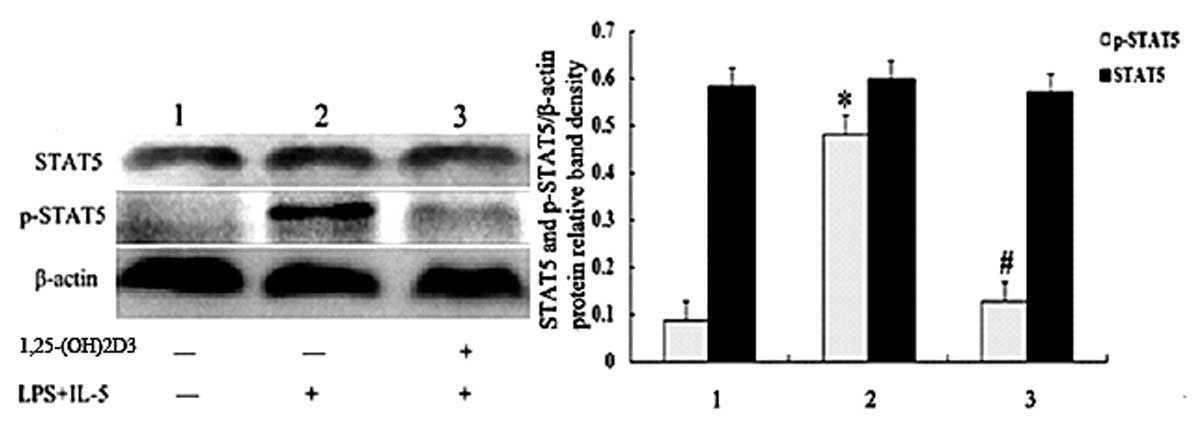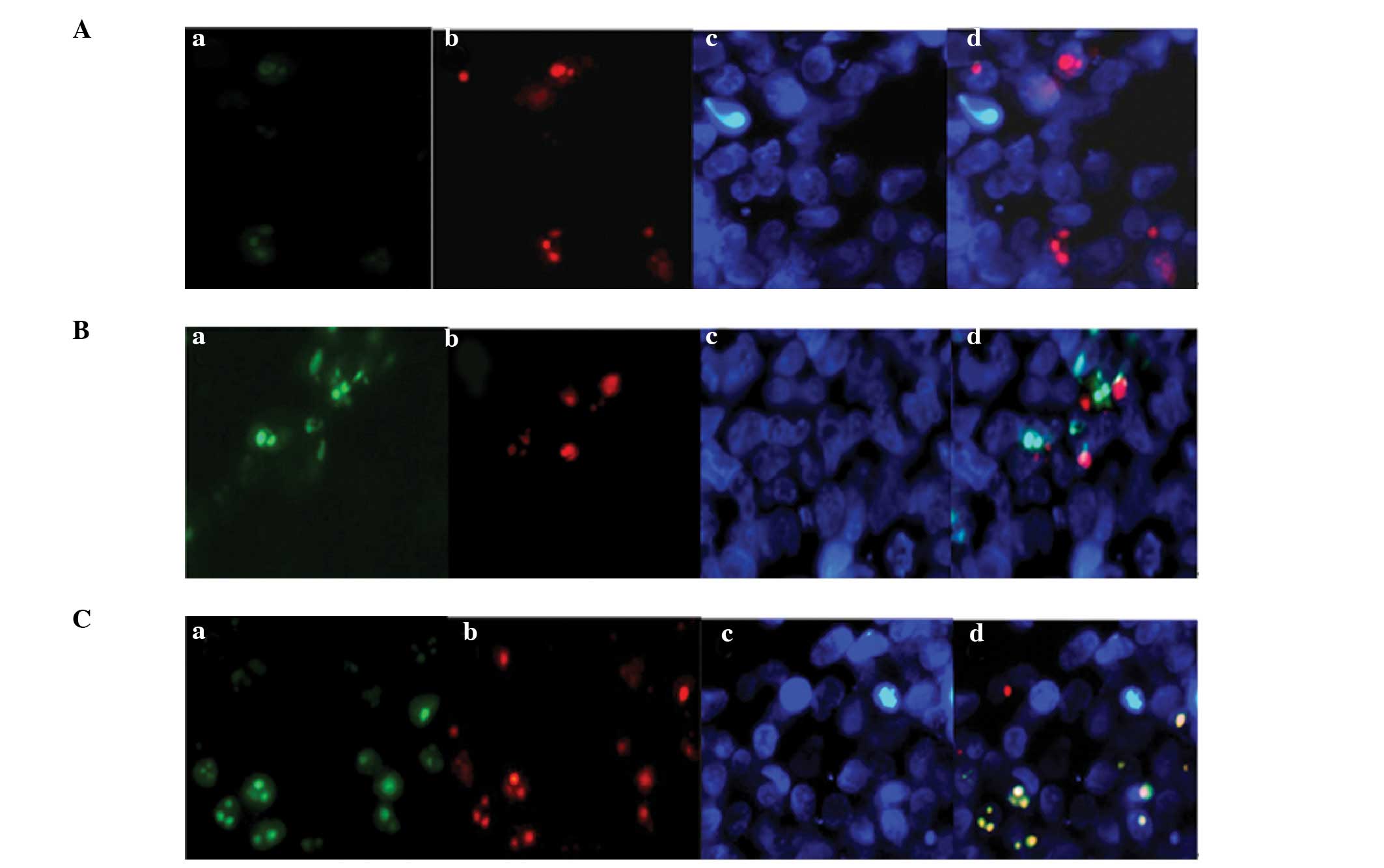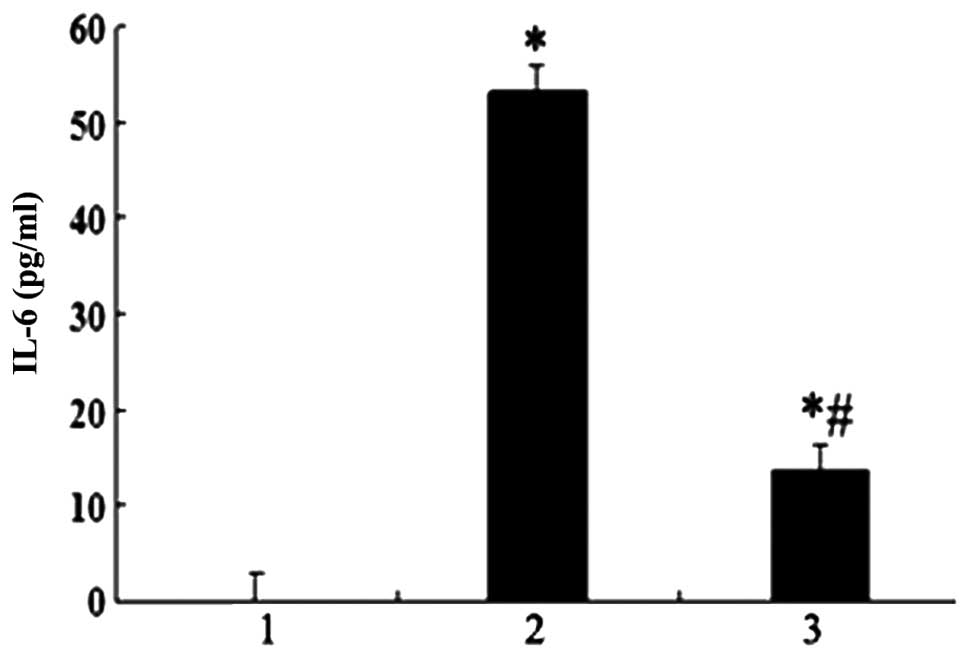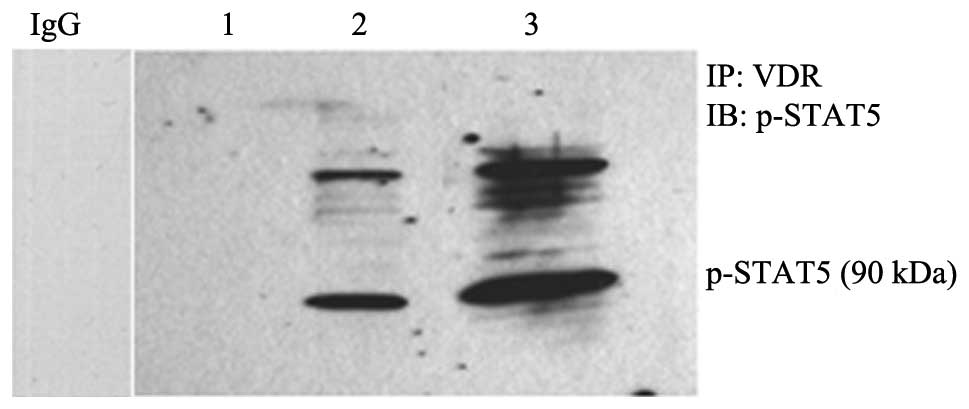|
1
|
Duncan BB, Schmidt MI, Pankow JS, et al:
Low-grade systemic inflammation and the development of type 2
diabetes: the atherosclerosis risk in communities study. Diabetes.
52:1799–1805. 2003. View Article : Google Scholar : PubMed/NCBI
|
|
2
|
Donath MY and Shoelson SE: Type 2 diabetes
as an inflammatory disease. Nat Rev Immunol. 11:98–107. 2011.
View Article : Google Scholar : PubMed/NCBI
|
|
3
|
Navarro-González JF and Mora-Fernández C:
The role of inflammatory cytokines in diabetic nephropathy. J Am
Soc Nephrol. 19:433–442. 2008. View Article : Google Scholar : PubMed/NCBI
|
|
4
|
Ortiz-Muñoz G, Lopez-Parra V, Lopez-Franco
O, et al: Suppressors of cytokine signaling abrogate diabetic
nephropathy. J Am Soc Nephrol. 21:763–772. 2010. View Article : Google Scholar : PubMed/NCBI
|
|
5
|
Yang M, Shen Z, Chen D, Gan H, Shen Q,
Yang B and Du X: Effects of 1,25-(OH)(2)D(3) on the expressions of
vitamin D receptor, STAT5 and cytoskeletal rearrangement in human
monocytes incubated with sera from type 2 diabetes patients and
diabetic nephropathy patients with uremia. Inflamm Res. 61:511–520.
2012. View Article : Google Scholar : PubMed/NCBI
|
|
6
|
Pickup JC: Inflammation and activated
innate immunity in the pathogenesis of type 2 diabetes. Diabetes
Care. 27:813–823. 2004. View Article : Google Scholar : PubMed/NCBI
|
|
7
|
Ko GJ, Kang YS, Han SY, et al:
Pioglitazone attenuates diabetic nephropathy through an
anti-inflammatory mechanism in type 2 diabetic rats. Nephrol Dial
Transplant. 23:2750–2760. 2008. View Article : Google Scholar : PubMed/NCBI
|
|
8
|
Mathieu C, Gysemans C, Guilietti A and
Bouillon R: Vitamin D and diabetes. Diabetologia. 48:1247–1257.
2005. View Article : Google Scholar : PubMed/NCBI
|
|
9
|
Kayaniyil S, Vieth R, Retnakaran R, et al:
Association of vitamin D with insulin resistance and beta-cell
dysfunction in subjects at risk for type 2 diabetes. Diabetes Care.
33:1379–1381. 2010. View Article : Google Scholar : PubMed/NCBI
|
|
10
|
Liu PT, Stenger S, Li H, et al: Toll-like
receptor triggering of a vitamin D-mediated human antimicrobial
response. Science. 311:1770–1773. 2006. View Article : Google Scholar : PubMed/NCBI
|
|
11
|
Sadeghi K, Wessner N, Laggner U, Ploder M,
et al: Vitamin D3 down-regulates monocyte TLR expression and
triggers hyporesponsiveness to pathogen-associated molecular
patterns. Eur J Immunol. 36:361–370. 2006. View Article : Google Scholar : PubMed/NCBI
|
|
12
|
Baeke F, van Etten E, Gysemans C, et al:
Vitamin D signaling in immune-mediated disorders: Evolving insights
and therapeutic opportunities. Mol Aspects Med. 29:376–387. 2008.
View Article : Google Scholar : PubMed/NCBI
|
|
13
|
Adams JS and Hewison M: Unexpected actions
of vitamin D: new perspectives on the regulation of innate and
adaptive immunity. Nat Clin Pract Endocrinol Metab. 4:80–90. 2008.
View Article : Google Scholar : PubMed/NCBI
|
|
14
|
Stubbs JR, Idiculla A, Slusser J, et al:
Cholecalciferol supplementation alters calcitriol-responsive
monocyte proteins and decreases inflammatory cytokines in ESRD. J
Am Soc Nephrol. 21:353–361. 2010. View Article : Google Scholar : PubMed/NCBI
|
|
15
|
Norman AW, Frankel JB, Heldt AM and
Grodsky GM: Vitamin D deficiency inhibits pancreatic secretion of
insulin. Science. 209:823–825. 1980. View Article : Google Scholar : PubMed/NCBI
|
|
16
|
Mitri J, Muraru MD and Pittas AG: Vitamin
D and type 2 diabetes: a systematic review. Eur J Clin Nutr.
65:1005–1015. 2011. View Article : Google Scholar : PubMed/NCBI
|
|
17
|
Reddy PV, Puri RV, Khera A and Tyagi AK:
Iron storage proteins are essential for the survival and
pathogenesis of Mycobacterium tuberculosis in THP-1 macrophages and
the guinea pig model of infection. J Bacteriol. 194:567–575. 2012.
View Article : Google Scholar : PubMed/NCBI
|
|
18
|
Marcil V, Lavoie JC, Emonnot L, et al:
Analysis of the effects of iron and vitamin C co-supplementation on
oxidative damage, antioxidant response and inflammation in THP-1
macrophages. Clin Biochem. 44:873–883. 2011. View Article : Google Scholar : PubMed/NCBI
|
|
19
|
Vidal M, Ramana CV and Dusso AS:
Stat1-vitamin D receptor interactions antagonize
1,25-dihydroxyvitamin D transcriptional activity and enhance
stat1-mediated transcription. Mol Cell Biol. 22:2777–2787. 2002.
View Article : Google Scholar : PubMed/NCBI
|
|
20
|
Yamaoka K, Otsuka K, Niiro H, et al:
Activation of STAT5 by lipopolysaccharide through
granulocyte-macrophage colony-stimulating factor production in
human monocytes. J Immunol. 160:838–845. 1998.PubMed/NCBI
|
|
21
|
Alleva DG, Kaser SB, Monroy MA, et al:
IL-15 functions as a potent autocrine regulator of macrophage
proinflammatory cytokine production: evidence for differential
receptor subunit utilization associated with stimulation or
inhibition. J Immunol. 159:2941–2951. 1997.PubMed/NCBI
|
|
22
|
Kimura A, Naka T, Muta T, et al:
Suppressor of cytokine signaling-1 selectively inhibits LPS-induced
IL-6 production by regulating JAK-STAT. Proc Natl Acad Sci USA.
102:17089–17094. 2005. View Article : Google Scholar : PubMed/NCBI
|
|
23
|
Neely GG, Robbins SM, Amankwah EK, Epelman
S, et al: Lipopolysaccharide-stimulated or granulocyte-macrophage
colony-stimulating factor-stimulated monocytes rapidly express
biologically active IL-15 on their cell surface independent of new
protein synthesis. J Immunol. 167:5011–5017. 2001. View Article : Google Scholar : PubMed/NCBI
|
|
24
|
Foster N, Andreadou K, Jamieson L, et al:
VIP inhibits P. gingivalis LPS-induced IL-18 and IL-18BPa in
monocytes. J Dent Res. 86:883–887. 2007. View Article : Google Scholar : PubMed/NCBI
|
|
25
|
Merendino RA, Arena A, Gangemi S, Ruello
A, et al: In vitro effect of lithium chloride on interleukin-15
production by monocytes from IL-breast cancer patients. J
Chemother. 12:252–257. 2000. View Article : Google Scholar : PubMed/NCBI
|
|
26
|
Moue M, Tohno M, Shimazu T, et al:
Toll-like receptor 4 and cytokine expression involved in functional
immune response in an originally established porcine intestinal
epitheliocyte cell line. Biochim Biophys Acta. 1780:134–144. 2008.
View Article : Google Scholar : PubMed/NCBI
|
|
27
|
Yamaoka K, Otsuka T, Niiro H, et al:
Activation of STAT5 by lipopolysaccharide through
granulocyte-macrophage colony-stimulating factor production in
human monocytes. J Immunol. 160:838–845. 1998.PubMed/NCBI
|
|
28
|
Musikacharoen T, Matsuguchi T, Kikuchi T
and Yoshikai Y: NF-kappa B and STAT5 play important roles in the
regulation of mouse Toll-like receptor 2 gene expression. J
Immunol. 166:4516–4524. 2001. View Article : Google Scholar : PubMed/NCBI
|



















